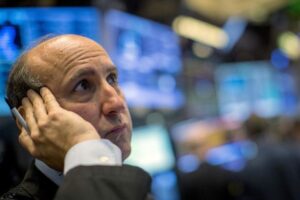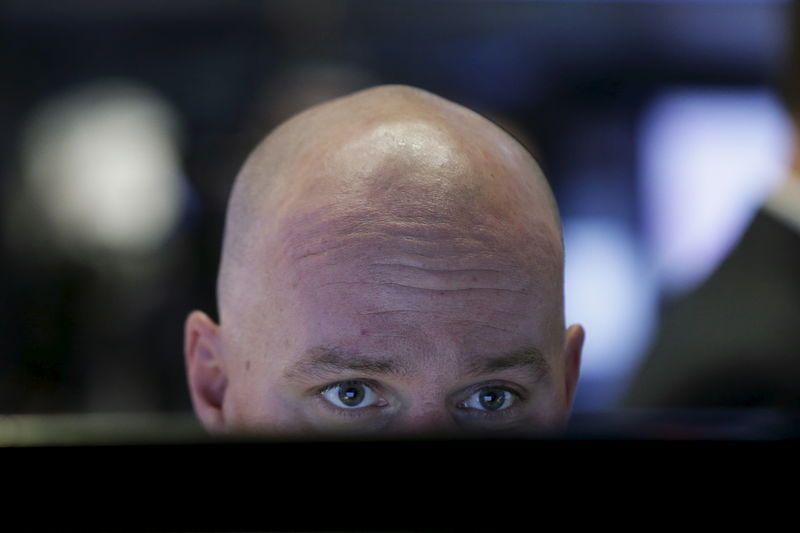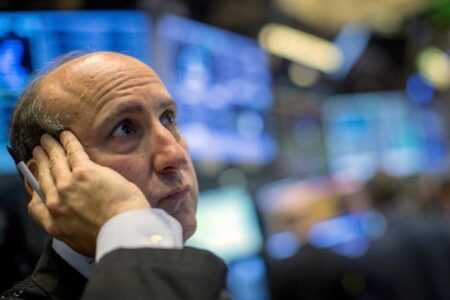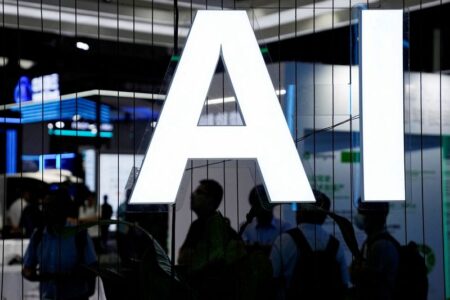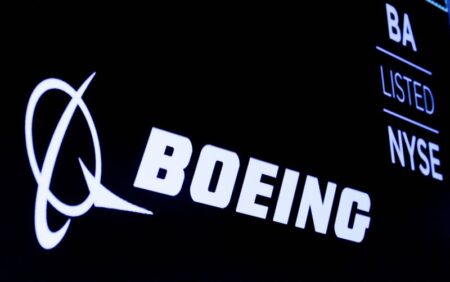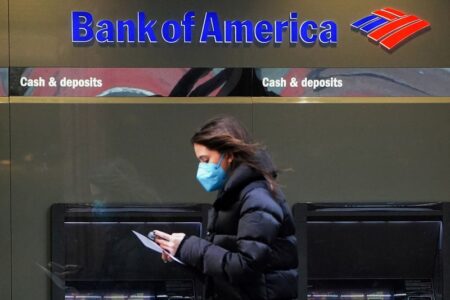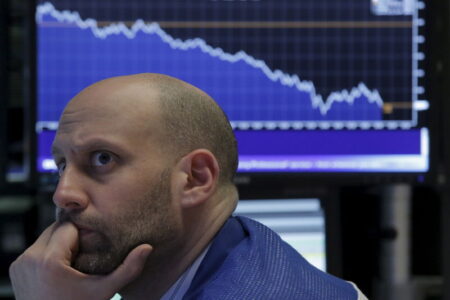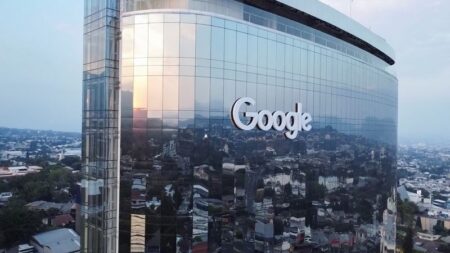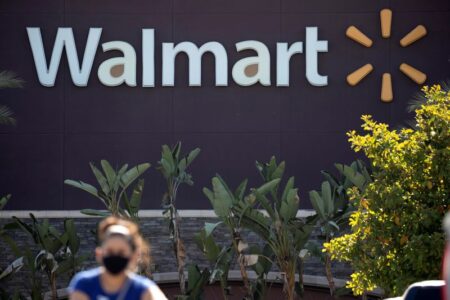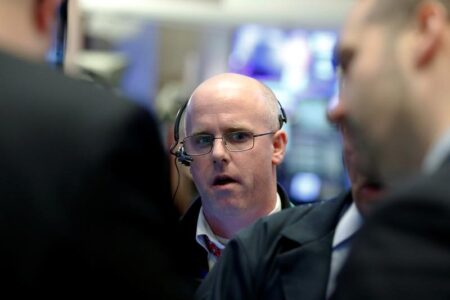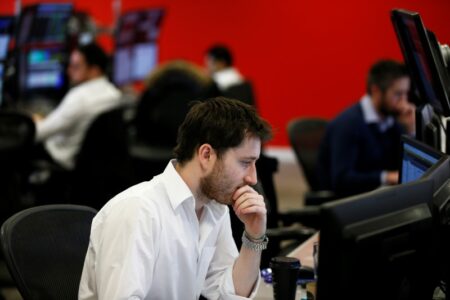In a recent earnings call, the company outlined its financial and operational performance, including a 20% increase in power generation and a strong financial position with significant liquidity.
Despite lower-than-expected power generation in the first half of the year due to weak wind conditions, the company maintains a positive outlook for the full year, expecting to produce between 900 and 1,000 gigawatt hours. The sale of the Leikanger hydropower asset has improved the company’s net debt position and financial capacity for growth.
Looking forward, the company anticipates a ramp-up in capital expenditure and has provided guidance on various financial metrics, including EBITDA and free cash flow scenarios.
Key Takeaways
- The company reported a 20% increase in power generation year-over-year, due to Cast Group’s addition.
- Weak wind conditions led to a 10% shortfall in power generation for the first half of the year.
- Full-year production is estimated to be between 900 and 1,000 gigawatt hours.
- Proportionate EBITDA stood at €13 million in the first half, with net debt reduced to €46 million.
- Cash flow from investing activities was impacted by €49 million, primarily from an asset sale.
- The company has over €120 million in liquidity and has adjusted its legal cost guidance downwards by €1 million.
- A new 500-megawatt solar and battery project portfolio has been acquired in Sweden.
Company Outlook
- Positive EBITDA expected if achieved price exceeds €25 per megawatt hour.
- Free cash flow for the year is projected to range from -€16 million to -€2 million.
- Net debt is expected to increase by €16 million for the full year, considering the strong liquidity position.
- The company is focused on organic growth, acquisitions, and greenfield pipeline development for long-term value.
Bearish Highlights
- Power generation volumes were lower than expected due to weak wind conditions.
- Achieved price per megawatt hour decreased by approximately 40% year-over-year, affecting revenues.
- Negative EBITDA for the quarter, excluding noncash items, due to lower revenues and higher operating and legal costs.
Bullish Highlights
- The company’s financial position remains strong, with total liquidity exceeding €120 million.
- Sale of Leikanger hydropower asset significantly reduced net debt and increased financial growth capacity.
- Progress in greenfield portfolio with expectations to monetize early-stage projects soon.
Misses
- Lower achieved price and weaker wind conditions led to lower than expected revenue and power generation.
Q&A Highlights
- Energy pricing, acquisition strategy, and greenfield asset monetization were key topics.
- The company has added around 700 megawatts to their pipeline in the first half of the year.
- No decision has been made on share buybacks, despite considering the option.
The company, with its ticker mentioned at least once in the article, remains confident in its strategy and financial health. It is poised to capitalize on market opportunities and continue its growth trajectory through strategic investments and asset development.
InvestingPro Insights
In light of the company’s recent earnings call, InvestingPro has provided some key metrics and tips that may offer additional insights into the company’s financial health and stock performance. Here are some noteworthy InvestingPro Data points:
- The company’s market capitalization stands at $262.94 million, indicating its size and market value within the industry.
- A Price/Earnings (P/E) ratio of 46.49 suggests that investors are willing to pay a higher price for the company’s earnings, which could be a sign of positive future growth expectations.
- Revenue growth for the last twelve months as of Q2 2024 was 24.59%, indicating a significant increase in the company’s sales, which aligns with the company’s reported increase in power generation.
InvestingPro Tips highlight several aspects of the company’s stock:
- Analysts anticipate sales growth in the current year, which could be a driving factor behind the company’s optimistic production outlook of 900 to 1,000 gigawatt hours.
- The stock is trading at a low Price/Book multiple of 0.67, potentially making it an attractive value investment for those looking at the company’s assets relative to its market price.
For readers interested in a deeper analysis, there are additional InvestingPro Tips available, providing further expert insights into the company’s performance and stock potential. These tips can be accessed through the InvestingPro platform, which includes a comprehensive list of metrics and professional insights.
Full transcript – Orron Energy AB (LNDNF) Q2 2024:
Robert Eriksson: [Call Starts Abruptly] …who will talk about in a bit more detail around the second quarter results. Our power generation for the first half amounted to 456 gigawatt hours of power generation. And that represents a 20% increase from the same period last year. So we’ve seen the full impact of Cast Group coming online, which is a material increase for the Company, and we’ve seen Leikanger step out of the portfolio on the back of the sale. Unfortunately, in the first half of this year, we’ve also seen quite weak wind conditions. And so even though we produced a good result in terms of power generation, it was around 10% lower than we expected for the first half of this year. And so as we look to the full year 2024, we expect to produce between 900 and 1,000 gigawatt hours of production, and that’s primarily dependent on wind speeds in the second half. If we look at the financial performance of the Company in the first half of this year, we produced a proportionate EBITDA of €13 million, excluding some noncash items and including the sale of the Leikanger asset. We achieved a price of €42 a megawatt hour, and that’s made up of €49 a megawatt hour in Q1 and €31 a megawatt hour in Q2. And we’ll touch on that a little bit more on the next slide. At the end of Q2, we have a net debt position of €46 million, and that’s a significant reduction from 91 at the end of the first quarter, and that reduction in net debt is primarily due to the sale of one of our noncore assets, which is a Leikanger hydropower asset. And so we sold Leikanger during Q2 for €53 million enterprise value, and that marks a big reduction in net debt. It increases our finance capacity or financial capacity for growth, and it gives us more than €120 million of financial buyer power to be able to go and execute on our internal growth, investing in our own portfolio and growing through M&A. And Leikanger was a noncore asset for us. It was our only asset in Norway and the sale to a strategic buyer, we sold at a valuation that is significantly higher than that reflected in our share price. And today, we’re trading around 50% of the asset values that we hold and the Leikanger transaction is another data point that suggests the asset values of renewable assets are much higher in the hands of strategic and private buyers than they are potentially in some of the public listed entities. And we’ll touch on that a little bit as we go through the market conditions in the next slide. And finally, we had a strong performance on our greenfield portfolio during the quarter, we’ve added additional projects and additional opportunities into the portfolio, and we’ll touch on that in a couple of slides’ time. If we look at the market conditions in the second quarter and some of the recent transactions we’ve seen as well, it’s clear that in the second quarter, you can see on this chart that electricity prices were quite low in the second quarter. As I touched on before, first quarter, we saw achieved price of just shy of €50 a megawatt hour and the second quarter around €30 a megawatt hour. And that difference is driven by a warmer end to the winter, lower demand and gas storage and gas demand being quite low and low prices on that front as well. And interestingly, the price achieved in Q2 is lower than the breakeven cost of any new power generation technology, be it renewable nuclear ore, fossil fuel-fired power generation, the pricing in Q2 is significantly lower than the cost of producing any new facilities to generate power. And I think that’s really important to understand that although seasonally in Q2 and Q3, we see weak pricing, I think for these conditions to persist long term, we’re going to end up in a place where very little new capacity comes online. And that’s what we’re seeing in the market at the moment. In the first half of this year and especially in Q2, we’ve seen very few investment decisions for new technology coming to market a new investments in renewable power generation. And so my view is quite clear that the electricity price and the valuation on public companies has to increase. And if we look at the transactions we’ve seen also in the first half of this year, there’s three public players listed on this slide, anywhere between a 30% and a 50% premium to where their stock is traded when these transactions have gone through. And we see that public to private transaction where all of the buyers on this front are private entities where asset managers and private equity capital is able to see more value in the underlying assets and portfolios of these companies and public markets are. And we said earlier that Orrön Energy is trading at around a 50% discount to NAV. And I think this market condition we’ve seen in Q2 is amongst the lowest we’ve seen for a while, and players are starting to take advantage of those opportunities. And I expect while pricing remains low and valuations remain low, I expect to see more of this coming through. Orrön Energy sees no valuation for the greenfield portfolio and its stock price either. And if I take a look at OX2, they have a very strong company with a proven track record and a portfolio of opportunities, roughly the size of what we’re looking at in our greenfield portfolio. We also saw the sale of Helios, which is a pure solar developer in the Nordics at a strong valuation as well. So the market is starting to warm up to some of these opportunities, and we’re seeing capital flowing back into the sector, which is a positive step in my mind. If we look at our power generation for the quarter and our outlook for the rest of the year, as we already touched on, we delivered 456 gigawatt hours of production in the first half of this year, representing an increase from the same period last year. You can see on the chart that Cars Grove adds a material improvement into our power generating capacity. And we see an uplift in the second half of this year, giving us around 950 gigawatt hours of production for the full year. Now if we see low wind conditions like we did in the first half, we’ll be down at the bottom end of our guidance range. And if we see stronger wind conditions, we’ll be at the upper end of our guidance range of 900 to 1,000 gigawatt hours for the year. And our long-term outlook of production remains unchanged at on average weather conditions looking back historically, the portfolio of assets we have will generate around 1,000 gigawatt hours of production in any given year. And on our greenfield pipeline, we’ve continued to make important steps on our greenfield pipeline, and the second half of this year will be an interesting period where we expect to see some of our first projects coming to market. We have a 40-gigawatt pipeline of opportunities spread across our five countries of operation. And in the first half of this year, we’ve added over 700 megawatts worth of opportunities in wind and solar in Sweden and Finland alone. In our portfolio in the rest of the U.K. and Germany, we’ve signed a material amount of land leases, and we’re aiming to have our first projects reaching important ready to permit milestones in the second half of this year. And once we reach those milestones, we will aim to monetize some of our early-stage projects when we have land and grid secured as we move into the permitting phase. And we expect to start some of those processes for some material projects in the second half of this year, aiming for conclusion in the early part of next year. And so really, really strong progress in my mind operationally for the Company, high availability, strong production, 20% growth in production from last year, and we continue to make important steps on our greenfield portfolio setting us up for some monetization events in the coming 12 months from now. And so, with that, I’ll pass over to Espen, who’s going to touch on some of the financial results for the quarter before coming back to Q&A.
Espen Hennie: Thank you, Dan, and good afternoon, everyone. I’ll cover our quarterly financial performance and also touch upon the full year outlook. We have an updated cash flow outlook at the very end of my presentation, also reflecting the actuals year-to-date. I think the key takeaway today is that the Company is in a great place financially. We have a strong balance sheet. We have ample liquidity headroom, which means that we can — that shows that we can continue to pursue both organic and inorganic growth, which you will see in more details on [indiscernible] quite key, but a moving part for this quarter but really has created a very robust financial situation for us is closing of the lifetime transaction, which you will see now as we go into the financials a bit more detail the impact of both in the P&L and in our cash flow statement. If you start with some of the financial highlights. Dan already mentioned the power generation being slightly below expectations for the first half and also for the second quarter due to lower-than-normal wind speeds, the 182 gigawatt hours of power generation for the second quarter at an achieved price of €31 per megawatt hour in Q2. We also see — we also had low or weak power pricing during the quarter, as Dan mentioned, I mean, with improving hydrological situation in the Nordics on the back of rapid snow melting and also quite weak pricing across the power-related commodity complex being gas, coal and carbon quarters. So that led to revenues for the quarter of €6 million, excluding and again from Leikanger, which comes into other income and then an EBITDA of €8 million for Q2, including the accounting gain from the Leikanger transaction being just shy of €11 million. And then excluding noncash items in our G&A of €0.8 million. As I said, we are in a very robust financial situation with a lot of flexibility. And if you look at our net debt situation position, that reduced from €91 million of net debt at the end of Q1 to €46 million at the end of Q2 as we receive the proceeds from the Leikanger transaction during the quarter. And this compares then to our debt facility of €170 million in place, meaning that we have a lot of flexibility and optionality and resilience to pursue on our plans to grow both — like I said, both organically and inorganically going forward. The Leikanger sale, as I mentioned, shows up as an accounting gain in the P&L of €11 million. And you’ll also see the impact in our cash flow statement, where it has a positive impact of €49 million in our cash flow from investing activities when we get there. And obviously, this accounting gain is due to the fact that the sales price exceeded our book value quite significantly by €11 million and showing up in our EBITDA. We then move to our cost guidance for the year and an update there, tracking how we are performing year-to-date. And also, we have made a small adjustment to our legal cost outlook, starting with operating expenses. First half actual cost, €8 million. We are reiterating our full year guidance there of €15 million to €17 million. And based on our performance year-to-date and our outlook for the rest of the year, we expect to end up close to the midpoint of that guidance range. G&A expense, €5 million in actual cost year-to-date. We are reiterating also there our guidance for the full year of €9 million as we do expect slightly lower running costs for the G&A item in the second half compared to first half. So down legal costs, as I said, we have there reduced our guidance by €1 million from €8 million to €7 million for 2024, reflecting that we see a lower cost base for the coming six months compared to the actual cost year-to-date, which has been €4 million. And that €7 million is also now our estimate for next year. Capital expenditure, we have spent €4 million for the first half. We do expect a ramp-up there in costs in the second half of the year, which is according to our activity plan and budgets. So we still expect to end up at €14 million for the full year on CapEx and which is then mainly investments into our green free portfolio. Moving then to some key financial metrics and comparing to the preceding quarter and also the corresponding quarter last year due to quite strong seasonality both in wind speeds and power pricing in the Nordics, we argue that the same quarter last year is a more relevant comparison than the preceding quarter. So if you start with power generation, 182 gigawatt hours, as we already said, that’s below expectations, as mentioned, due to lower than normal wind speeds during the quarter, but still 11% increase compared to the corresponding quarter last year. As the car grew volumes contribute more and offsets — more and offsets the volumes that we lost after divesting Leikanger. Achieved price, €31 per megawatt hour. That’s approximately 40% reduction compared to the Q2 in 2023. And as I said, there’s a range of factors there sort of which has contributed to quite weak pricing throughout the summer in the Nordic region. So this explains then the difference in revenues if you — when we move from Q2 ’23 to this quarter, the second quarter of ’24, which has fallen from €9 million to €5.6 million. So there’s €3.4 million lower revenues explained by those two factors, as I mentioned. And then when we move to EBITDA, we reported an EBITDA, excluding the noncash items in our G&A cost base of €7.5 million for the quarter, including the Leikanger. If you strip that out, we reported a negative EBITDA for the quarter of €3.4 million which is then again explained by the lower revenues due to the lower achieved price in the quarter compared to a year ago and also some increases in our operating costs and G&A and legal costs compared to the corresponding quarter last year. We see the same pattern then as we move to the cash flow from operating activities, as you can see on the slide here. And as mentioned, on an EBITDA level, we have this accounting gain for the like divestment of €10.9 million. And in the cash flow from investing activities, when we get there on a later slide, the impact is then a positive €49.1 million, reflecting the proceeds that we got from closing. If we then touch upon the achieved price for the quarter, reconciling the average system price in the Nordic region with our achieved price for our portfolio. Starting with the average Nordic system price during Q2, that was €35 per megawatt hour, whereas the average regional spot price of our portfolio was €40 per megawatt hour during Q2. And that reflects the very favorable geographical mix of our assets with 85% of our power generation during the quarter coming from SC3, SC4 in Finland and approximately 40% coming from SC4 alone and being the very strong price region in the Nordics. So we have this premium of €5 per megawatt hour for the quarter. Then we have a small positive impact from sale of guarantees of origin and hedging before then deducting the capture price discount in Q2, which was 25%, very similar to the level that we observed in the first quarter of the year, leading into an all-in achieved price of €31 per megawatt hour in Q2. If we then jump to the underlying cash flow generation of our portfolio, representing sort of proportionate cash flow generation. Starting with revenues. Total revenue, including other income, was €16.4 million for Q2. If you remove the gain on the Leikanger sale, to get sort of the underlying cash flow generation, that leaves us with $5.5 million revenues for the quarter. And then we have the operating cost of €4 million and G&A of €4.9 million after excluding noncash items. Out of those €4.9 million, we have €2 million of legal costs relating to the Sudan case. That results in an EBITDA of minus €3.4 million for the quarter, excluding noncash items. And then from that, we deduct interest expense and the CapEx. CapEx being an investments into our greenfield portfolio progressing those projects, mainly leading to an all-in operating cash flow after interest and CapEx for the quarter of minus €7 million. And I think it’s important to keep in mind, as I mentioned in the start here the seasonality, both in wind speeds and typically Nordic power prices means that we do expect sort of a large — the largest proportion of our earnings and cash flow to occur during Q1 and Q4. Looking at our reported cash flow and changes to net debt from Q1 to Q2. We started the quarter ended Q1 with a proportionate net debt of €91 million. Then we had a cash flow from operating activities, excluding working capital of minus €3.9 million and a positive working capital impact of €2.3 billion before and a very significant impact from Leikanger. As I mentioned, we have a positive cash flow from investing activities of €46 million for Q2. That is made of — made up of the Leikanger impact, €49 million. And then we have the CapEx of $2.4 million and some other investing activities of less than €1 million, being in a net €46 million positive impact or a reduction to net debt. Then after some small — other small impacts, we are closing then Q2 with a net debt — proportional net debt position of €46 million, as I said before, very, very significant drop from the 91% at the end of Q1. And as you can see on the right hand of this chart or this slide, sorry, you can see we are in a very, very robust financial position with total liquidity exceeding €120 million, made up of our cash balance of €16 million at the end of the quarter and an undrawn portion of our RCF of €110 million, so all in more than €120 million available liquidity for the Company. Ending then with an update to our ’24 cash flow outlook. As I mentioned initially that we are now providing. This reflects the actuals that we’ve had year-to-date, so the actual outcome for the Company for the first two quarters. And then for the second half of the year, we have here included three different scenarios. So achieved price ranging from 30% to 70%. So either 30, 50 and 70 for the three scenarios that we are laid out there. A couple of things to note. The Leikanger gain is not included in these figures, and we are here assuming the midpoint of our updated power generation outlook in terms of volumes, so 950 gigawatt hours for the full year. So please keep in mind that if you project this going forward, our long-term annual power generation forecast is 1,000 gigawatt hours and 950s for this year due to the lower than normal wind speeds for the first half of the year. So if we start then with revenue based on, like I said, the second half achieved price ranging from €30 to €70 per megawatt hour. We expect to end up with revenues ranging from €35 million to €55 million for the full year and an EBITDA of €11 million to €29 million before we deduct legal costs for — related to the Sudan case, so EBITDA, excluding any Sudan legal costs. As you have said before, the importance of looking at EBITDA generation before Sudan legal cost is because we have an average remaining asset life of our portfolio of more than 20 years, whereas we expect the cost level related to the Sudan legal costs in the current shape or form to only be with us until the end of 2025. So that’s why EBITDA before legal cost is a really relevant metric for a long-term cash flow generation capacity of this company. As you can see, we have a breakeven price on EBITDA level before legal costs of €25 per megawatt hour. So all — for every quarter, we have an achieved price exceeding €25 per megawatt hour. We will generate positive EBITDA going forward. When we then deduct the legal costs, as you mentioned, which is now €7 million for the full year, and we expect a similar level of €25 million, you’ll get the corresponding EBITDA, including the legal costs, ranging from €4 million to €22 million for the full year. And then after deducting interest expense, we expect that free cash flow pre-CapEx ranging from minus to €16 million for 2024. And if you then — even if you look at the low case there, so €30 achieved price for the second half of the year, minus €2 million of free cash flow pre CapEx. We can add then our CapEx forecast for the year, our guidance, which is €40 million. That implies that we will only increase our net debt of €16 million for the full year. And you can compare that to more than €120 million of available liquidity which then highlights the very strong or very high financial flexibility and resilience that we currently have. And of course, as you can see on the slide here and very important to note is that this cash flow generation that you’re presenting here obviously doesn’t include any impact or value upside from our greenfield pipeline. Then I’ll leave [indiscernible] over to Dan to present concluding remarks.
Daniel Fitzgerald: Thank you, Espen. And I think the second quarter has been a good step in our journey towards creating a company of scale. We have a portfolio of cash-generating assets, delivering a long-term production of around 1,000 gigawatt hours, we’ve got organic growth platforms established across all five of our countries of operation, and we’re starting to see the fruits of that coming through new projects in the Nordics. Our repowering and life extension portfolio continuing to grow. We’re continuing to make small acquisitions and consolidation acquisitions within each quarter, and we did so again in the second quarter. So that organic growth platform, which is going to be a pillar of our long-term value creation is making important steps during the quarter. Our large-scale greenfield pipeline continues to grow. We added around 700 megawatts during the first half. We’re seeing important progress in the U.K. and Germany towards our first — monetization of our first projects. And so with that, combined with the operating portfolio and as Espen touched on the strength of our balance sheet, we’re in a fantastic position to continue to grow this company. And with €120 million or more than €120 million of financial firepower, we can take advantage of market opportunities whenever they exist. And so with that, I’ll invite Espen to come and join me up here, and I think we move into the Q&A.
A – Robert Eriksson: Yes. And as always, we have a lot of good questions, so let’s kick off right away. The first question, this and other reports refer to low prices on energy. Actually, the price in at least SE4 is consistently high with regards to Nordic standards. Is your budgeting too optimistic?
Daniel Fitzgerald: I think if we talk generally around system price, we look at the Nordic system price, it’s clear that SE4 takes a significant premium. And as it stands today, we’re sitting at around €90 a megawatt hour in SE4 versus a much lower price in SE3 in other regions. I think SE3, roughly in line with system price, the finished price region, slightly above and SE4 slightly above as well. I think if we look back to the reports, which have been low pricing, it’s Q3 of last year with the impact of StormHarns Q2 of this year. But in Q4 of last year and Q1 of this year, I think we achieved on average across our portfolio of €49 a megawatt hour in Q1. And so we — as Espen touched on, we have a forecast for our budgeting of between €30 and €70 a megawatt hour. And I think we’re ranging every quarter we’re ranging in between those outlooks. So I think we just need to note where €30 a megawatt hour sits in terms of growing new capacity and power generation, it’s below the breakeven of any technology. And I think that’s a point we wanted to get across with the Q2 pricing. But we remain in a good financial position, notwithstanding the low price in Q2.
Robert Eriksson: Thank you, Daniel. The next question, since you were not the buying party in any of the takeovers you described, you obviously found the price less than attractive. Do you expect a further market weakening, which will allow for better opportunities with regards to acquisitions?
Daniel Fitzgerald: Yes, I think I’d love to be the takeover party of an [indiscernible] Neon’s case, $10 billion worth of equity value or enterprise value to go and acquire. And we’re not — we’re just not that size and scale of company today. The buyers here are large-scale private equity or funds that are looking to deploy significant amounts of capital into growth and growth in renewables. And so the price is what it is. I think it demonstrates that a lot of the public players are undervalued. It demonstrates that there’s value on the market for those strategic buyers who want to own these assets. We’ve seen it in Leikanger, and we’ve seen it in other transactions like OX2 and Cabos, et cetera. Where we have been active, we’ve picked up a portfolio of solar and battery projects in the Nordics for a very, very low acquisition price. And that for us is create — is the — sowing the seeds of value creation. We picked up additional interest in our [indiscernible] wind farm, where we already own a portion, and we’re looking to consolidate ownership and aim towards 100% of that wind farm. So we are still active in the market in acquisitions. We still see attractive opportunities. And with pricing like it is in Q2, it gives us the opportunity to step into more M&A given our financial firepower. So I think it depends exactly what you’re looking for in the market and strategic players will find value where value and scale where we potentially can’t compete in those same markets.
Robert Eriksson: Thank you, Daniel. The next question is actually three questions here from the same person. It’, could I ask three questions, please. One, it’s an interest — it’s interesting to hear monetization of greenfield assets in the next 12 months. Could you talk more about this? What is the expected megawatt size of your coming acquisition disposals? Start with that.
Daniel Fitzgerald: Yes. I think we’re aiming for a range of projects as with any greenfield portfolio. The projects will mature at different rates. Each of our projects in the U.K. is around that 1 gigawatt size. So you should expect a material project coming for the U.K., and we have some smaller projects in Germany around that 100 megawatt size. So depending on the process in the second half on both land and some of the early-stage permitting work, it will be one of those — one of the large scale in the U.K. or some of the smaller ones in Germany, but each one of those will be a material point for the Company to understand and demonstrate the value that we see in the greenfield portfolio. So I think you should hear more about that in the coming 12 months. We’ll start the processes ideally in the second half of this year with a conclusion in the early part of 2025.
Robert Eriksson: And then on to the second question, with an improved balance sheet and more ability to spend, how should we think about CapEx for next year for 2025?
Espen Hennie: Yes, a good question. I mean, first of all, we will revert with detailed budgets and outlook for ’25 at our CMD. But I think just as a backdrop, it’s important to remember that, first of all, we have full flexibility and discretion when it comes to our capital commitments for next year and whatever we spend we will spend based on the expectation that, that is sort of a short cycle investment into projects that we can monetize within a quite short period thereafter. So it depends on a range of factors and also how we progress on the current projects and the monetization of those. But it’s also important to remember that over time, that our greenfield entity, our greenfield vehicle and investments will be sort of self-funding to the repeated monetization of projects. But it’s obvious that we will also invest into progressing our greenfield portfolio next year. I think as a starting point, it should be too far away from the CapEx you’ve seen this year, but we need to revert with more details at our CMD.
Robert Eriksson: And then the third question, could I also ask about the 500-megawatt new portfolio acquisition. What is the purpose of this acquisition? And what would you want to achieve with this?
Daniel Fitzgerald: Yes, I think it’s an early-stage portfolio from one of the largest landowners in Sweden that gives us an important step into solar and battery projects in Sweden, spread across SE3 and SE2. And so, we will aim to mature those projects. We have the land leases secured. We have some of the early-stage project work complete. We’ll move into the permitting phase. And our idea for these will be looking to monetize these projects similar to what we’re doing in the U.K. and German portfolio before we see any material CapEx investment. So, it’s an important pillar to add to our Swedish portfolio. We don’t have a material amount of solar in that portfolio today. And now with wind and solar, a bit more balanced across the Nordics. I think it’s an important addition to our portfolio and a good opportunity to create value.
Robert Eriksson: Thank you, Daniel and Espen. And then on to the next question. You got the mandate for buybacks during the AGM, and you are currently trading at a 40% to 50% discount to your underlying asset values. It’s hard to assume there are any assets out there that can be acquired at a better price than your own. May I ask what the holdup is with buybacks, especially after strengthening your balance sheet with the Leikanger sale?
Daniel Fitzgerald: Yes. I think buybacks is something we’re constantly looking at. We’re constantly looking at market conditions, looking at the share price, available liquidity to make a decision on that. And it is something we will — we constantly entertain at Board level and within the management team. So we haven’t made a decision to move forward on a buyback today. We have all of the mandates in place. And in the second half of the year, should the conditions continue as they are, you should expect us to have a discussion around buybacks again.
Robert Eriksson: Thank you, Daniel. And that actually concludes the questions. If there are no unanswered questions out there, this is the opportunity to post them. It seems to be no more questions. So with that, we would very much like to thank you for attending this presentation and looking forward to see you in the coming quarters.
This article was generated with the support of AI and reviewed by an editor. For more information see our T&C.
Read the full article here



